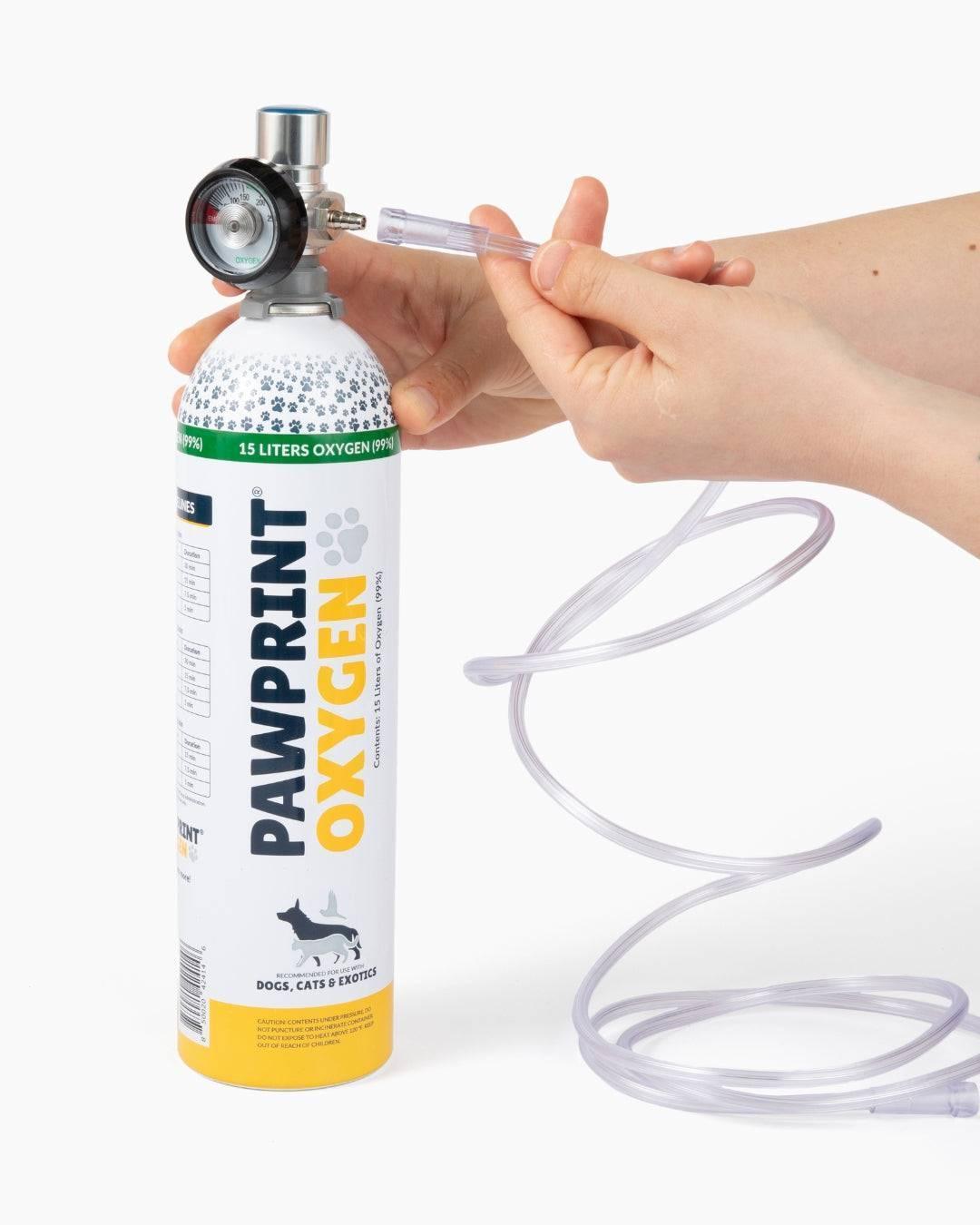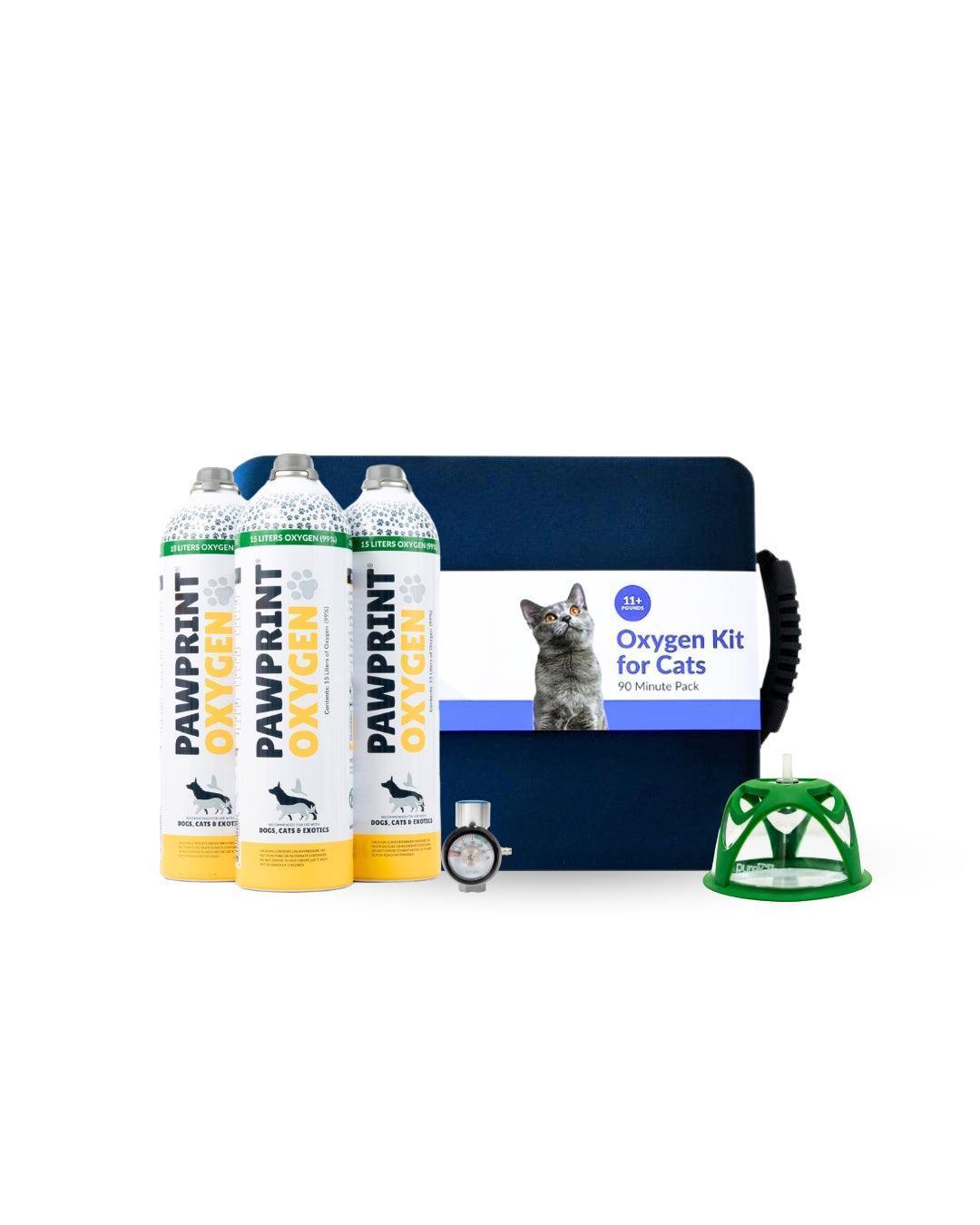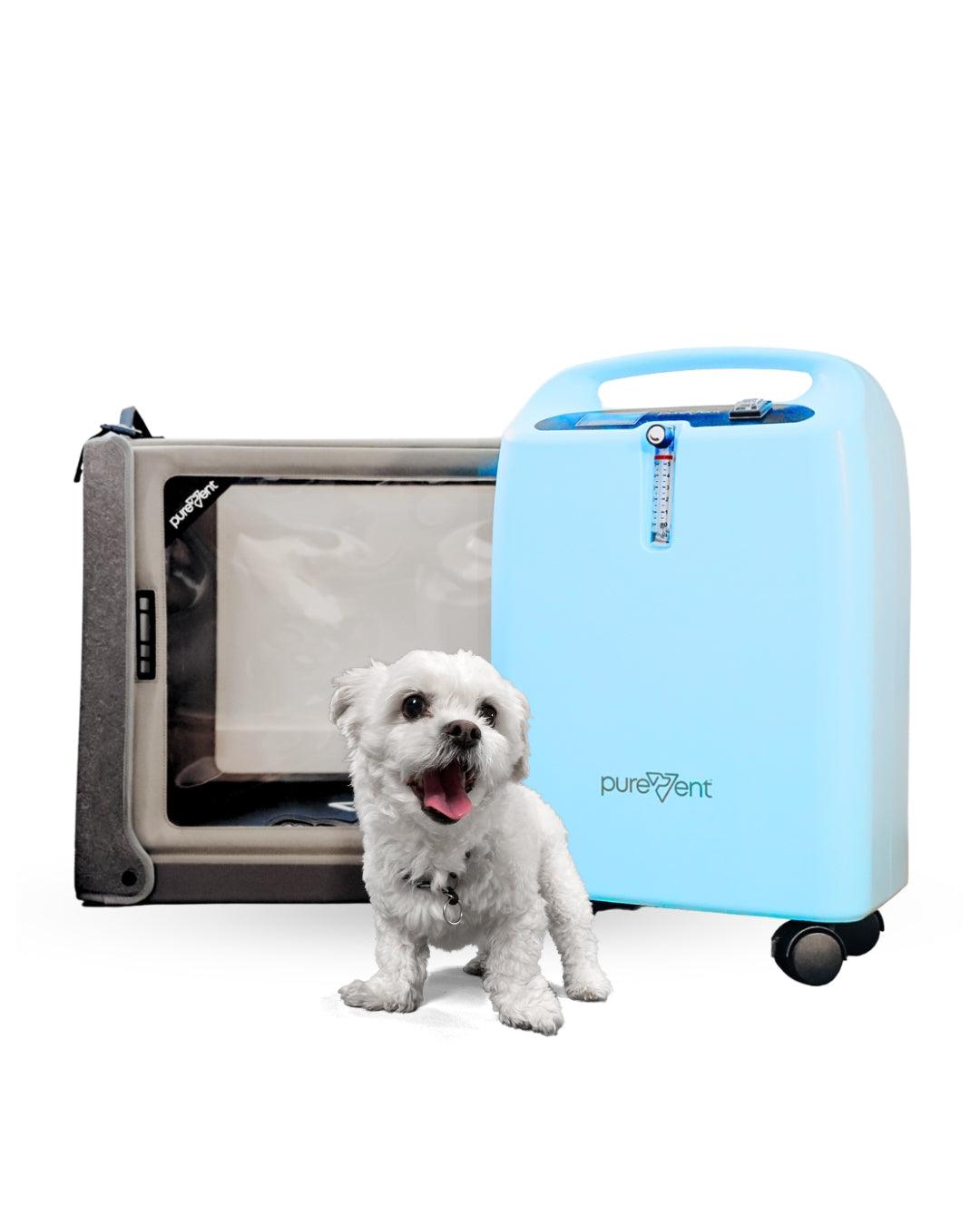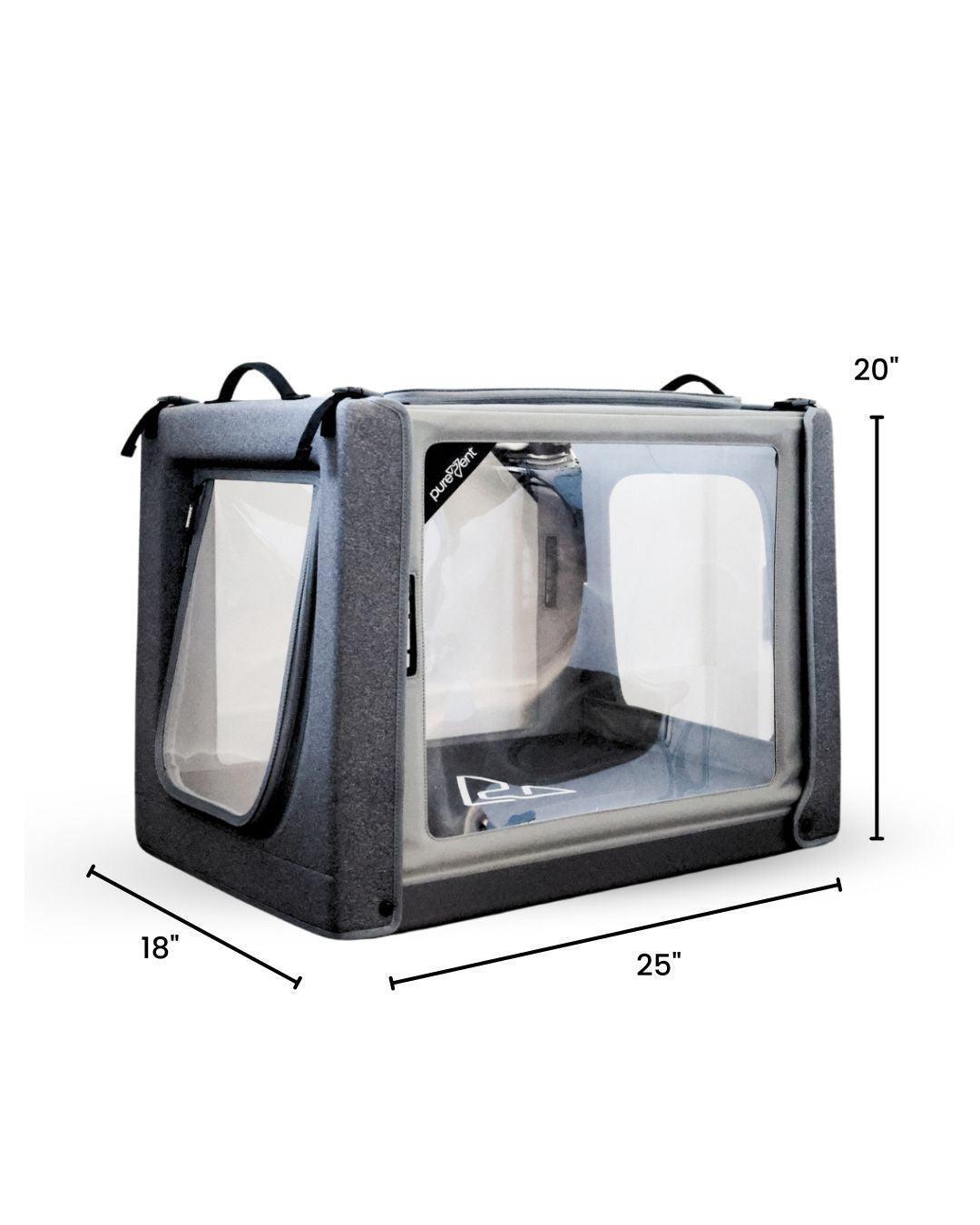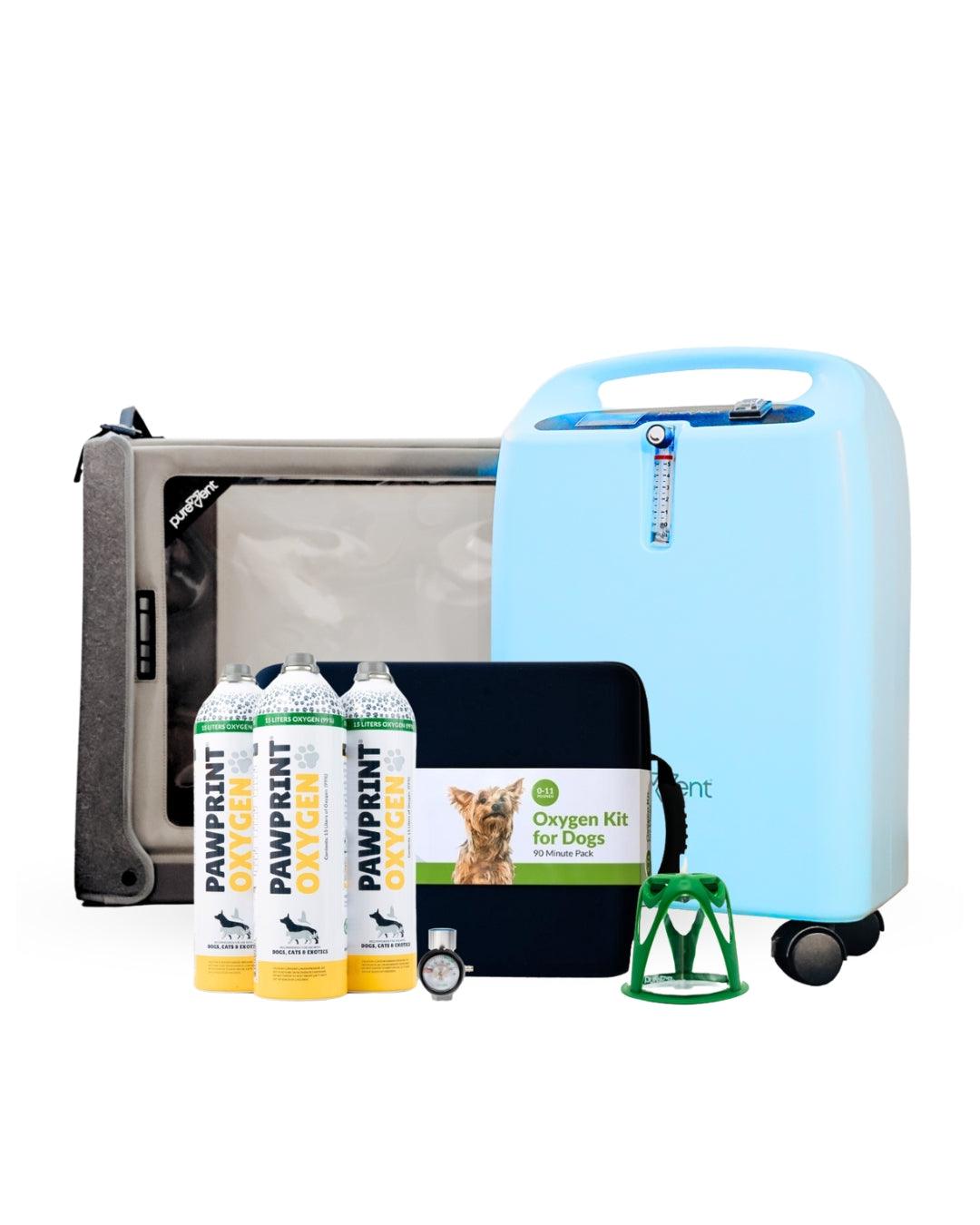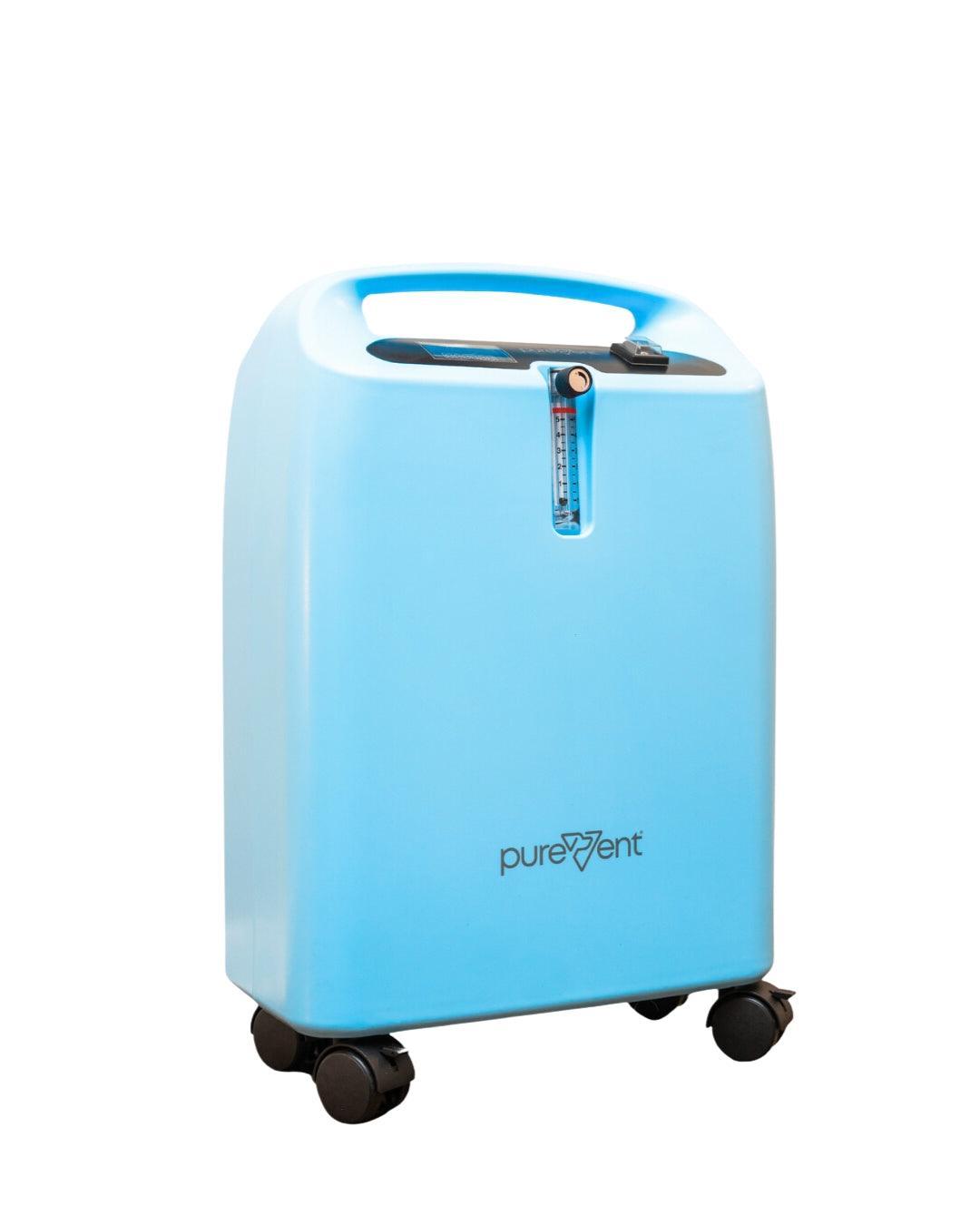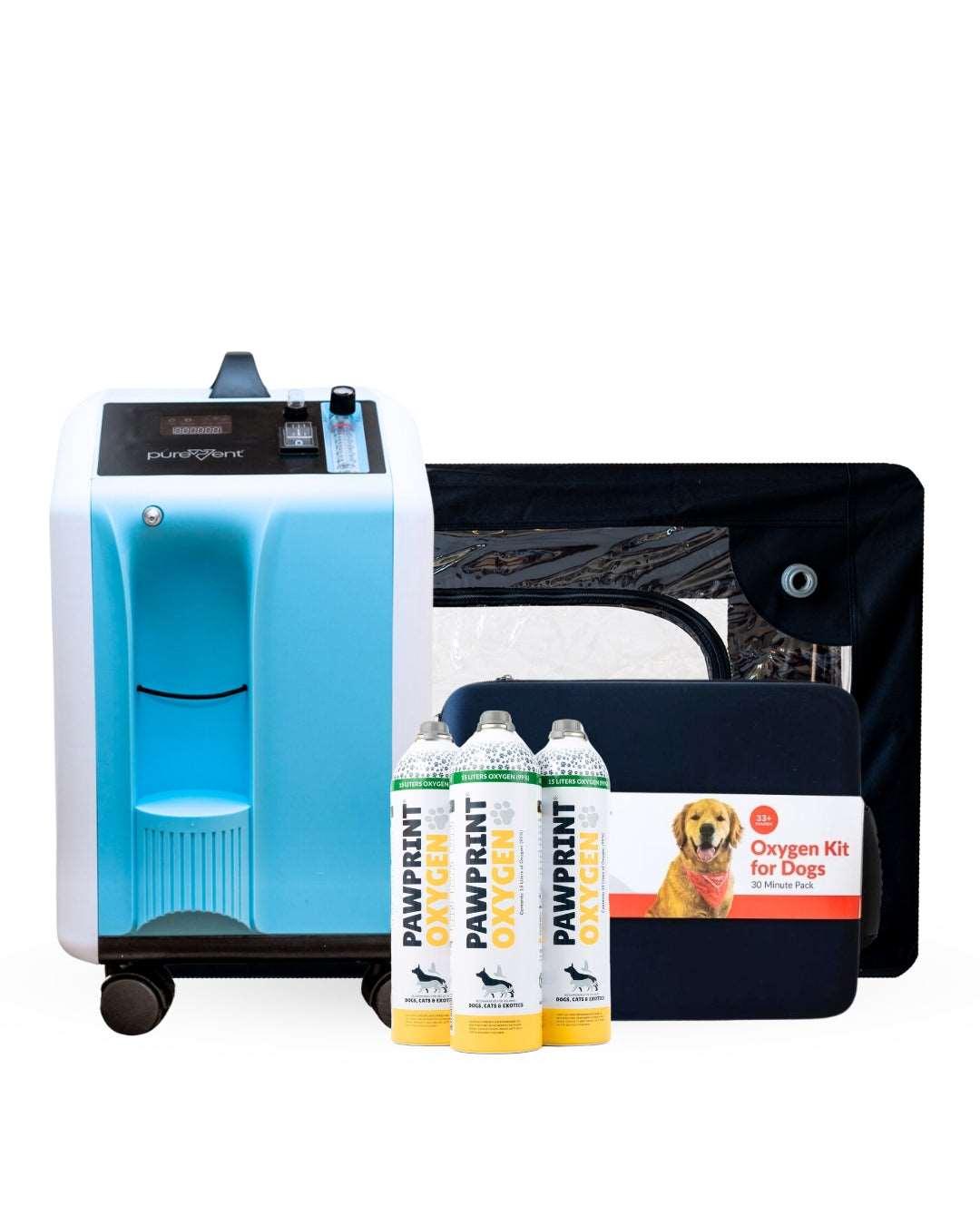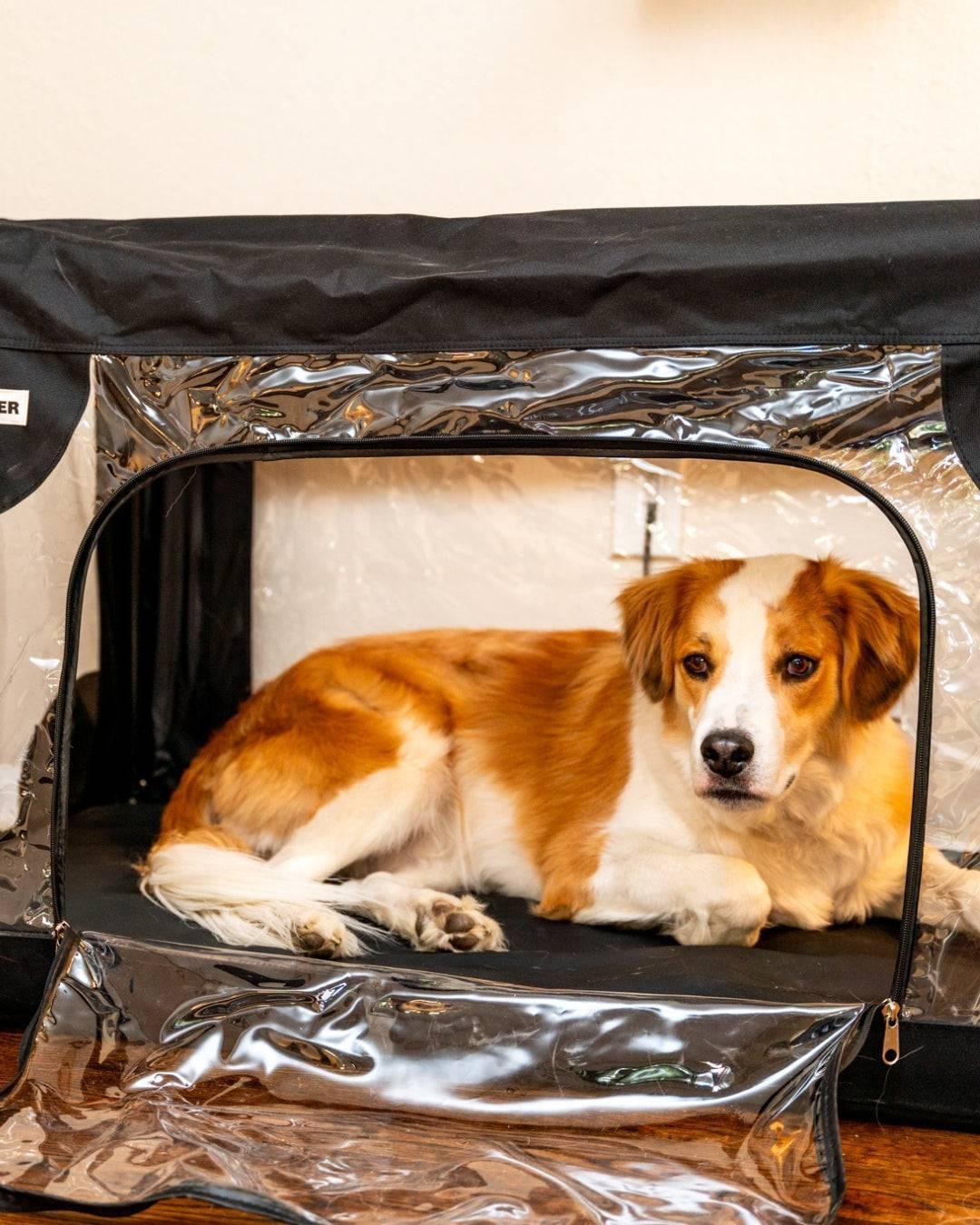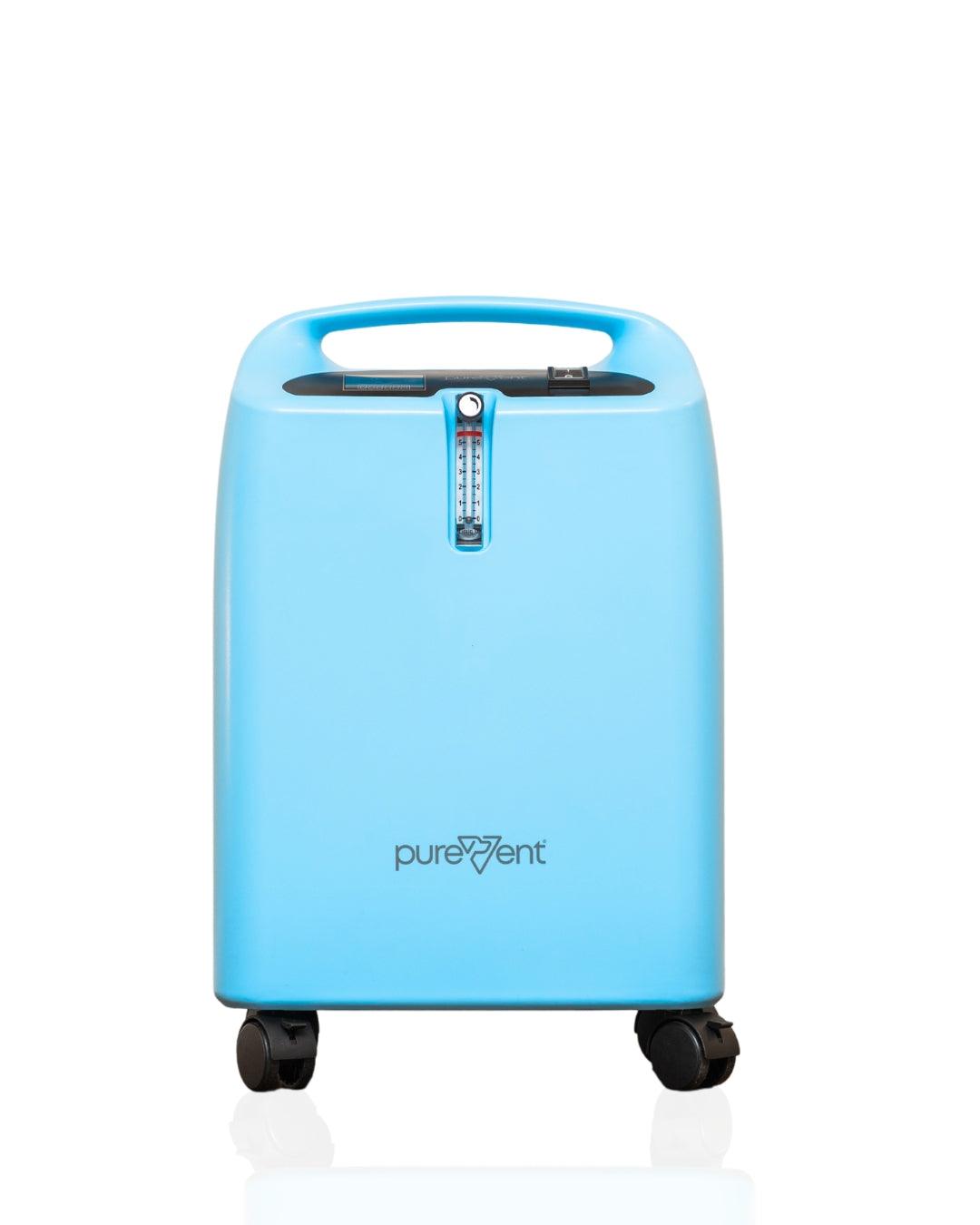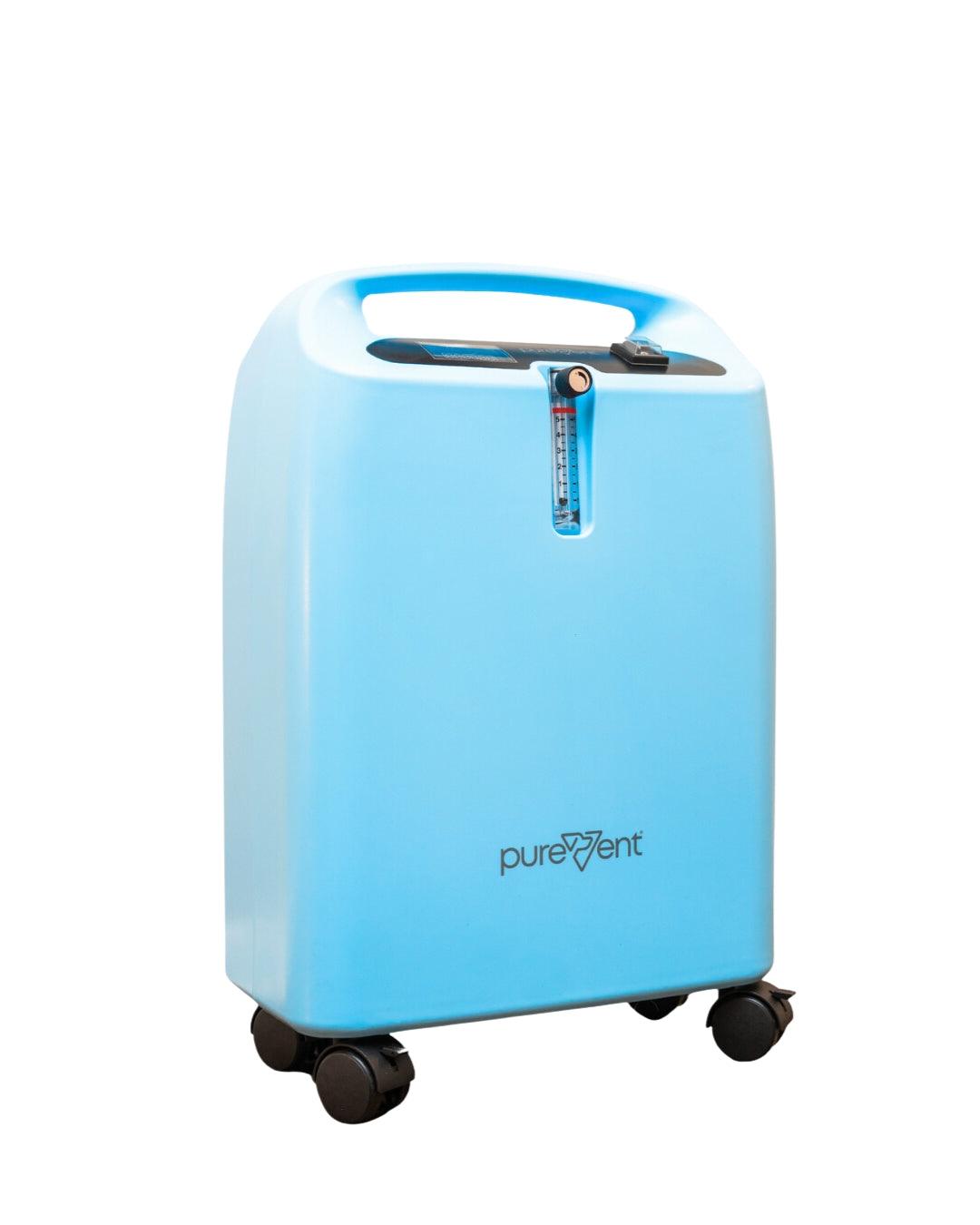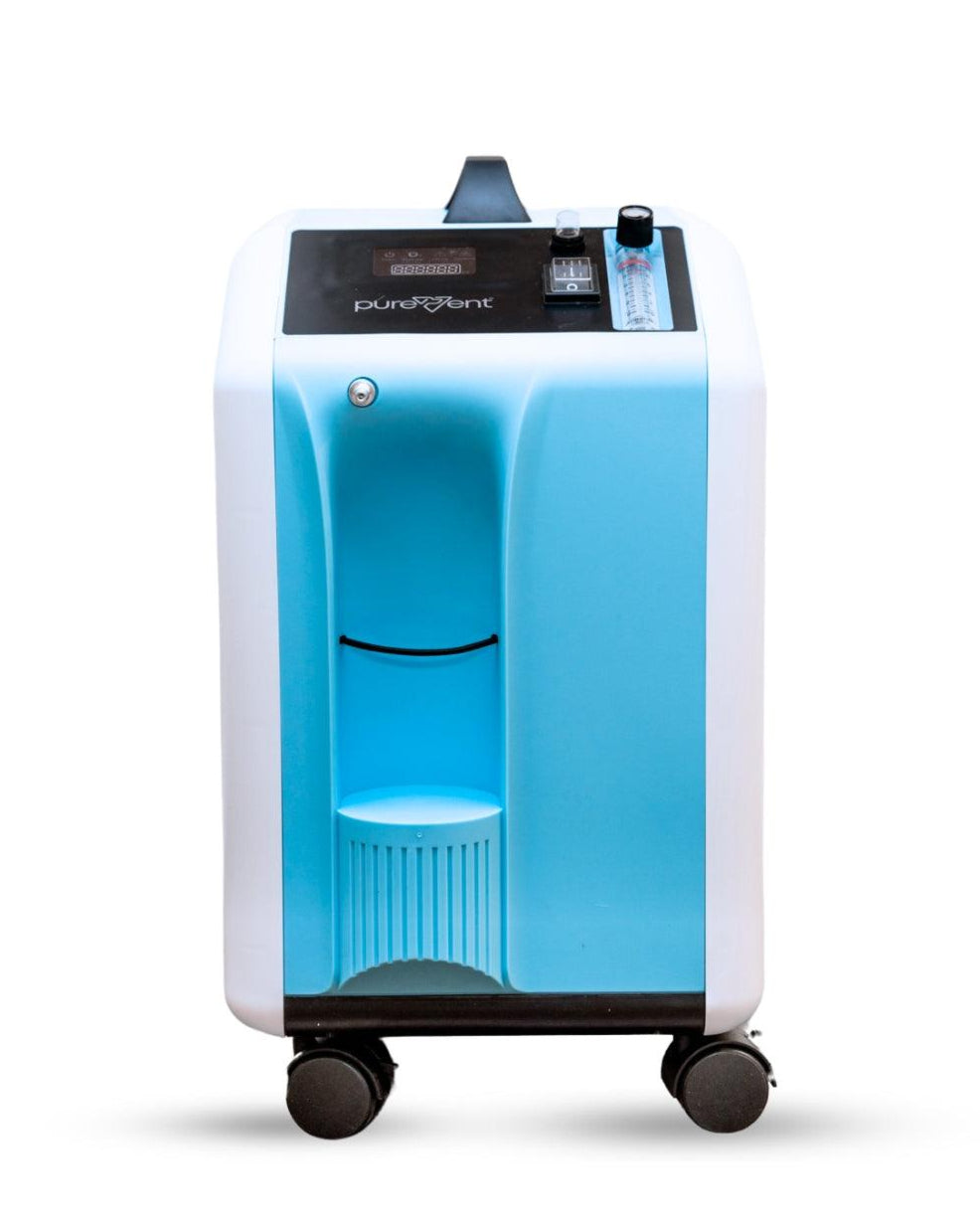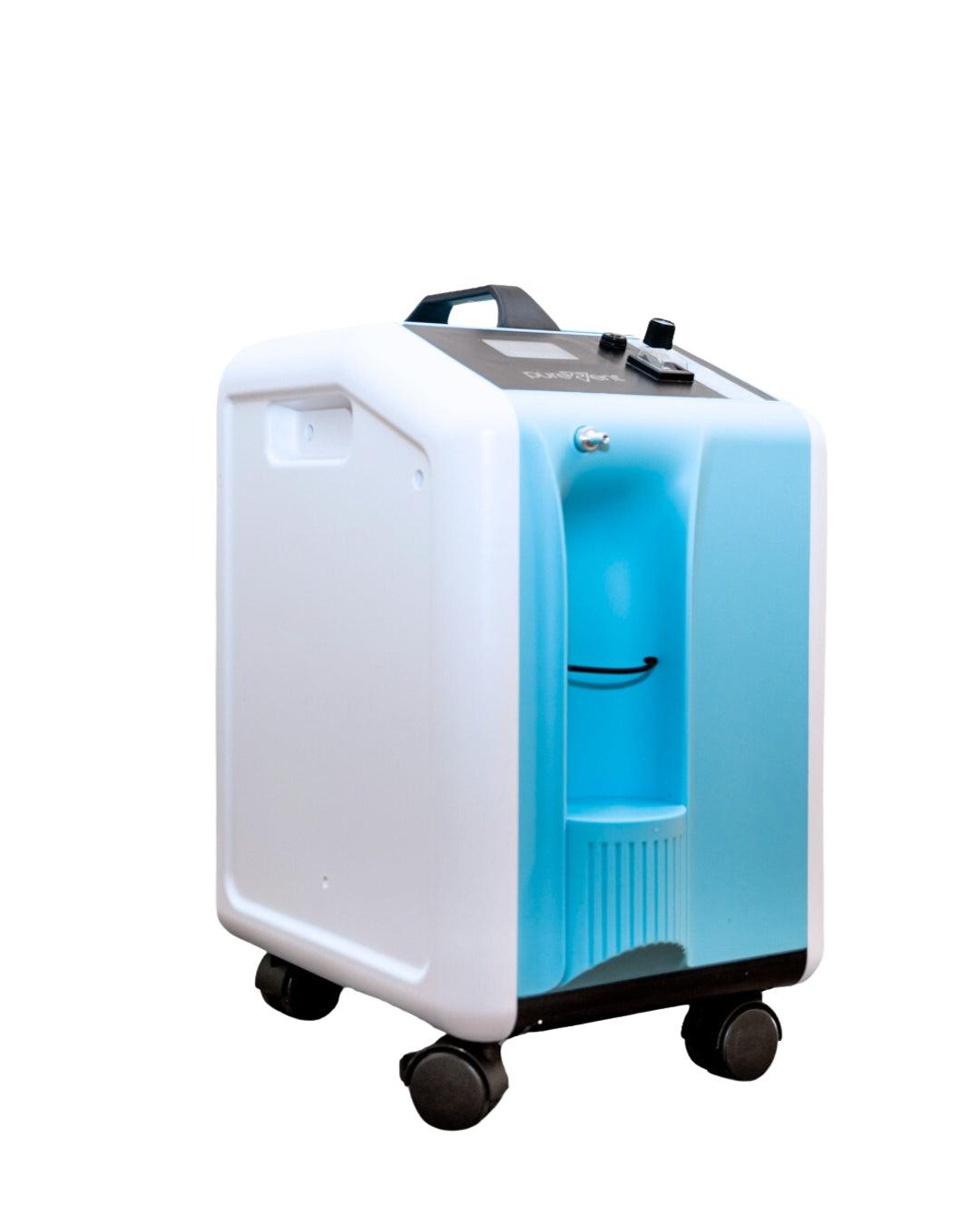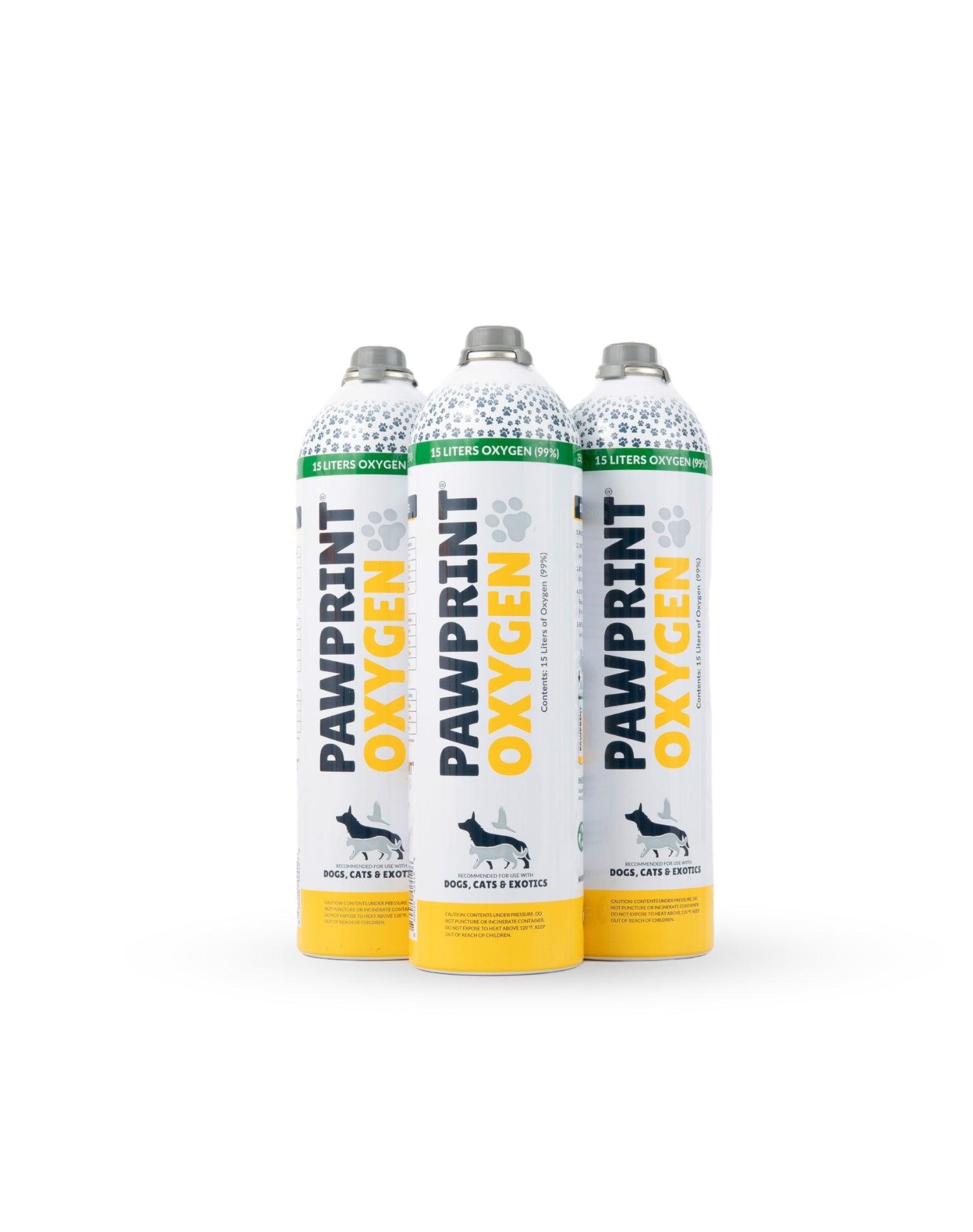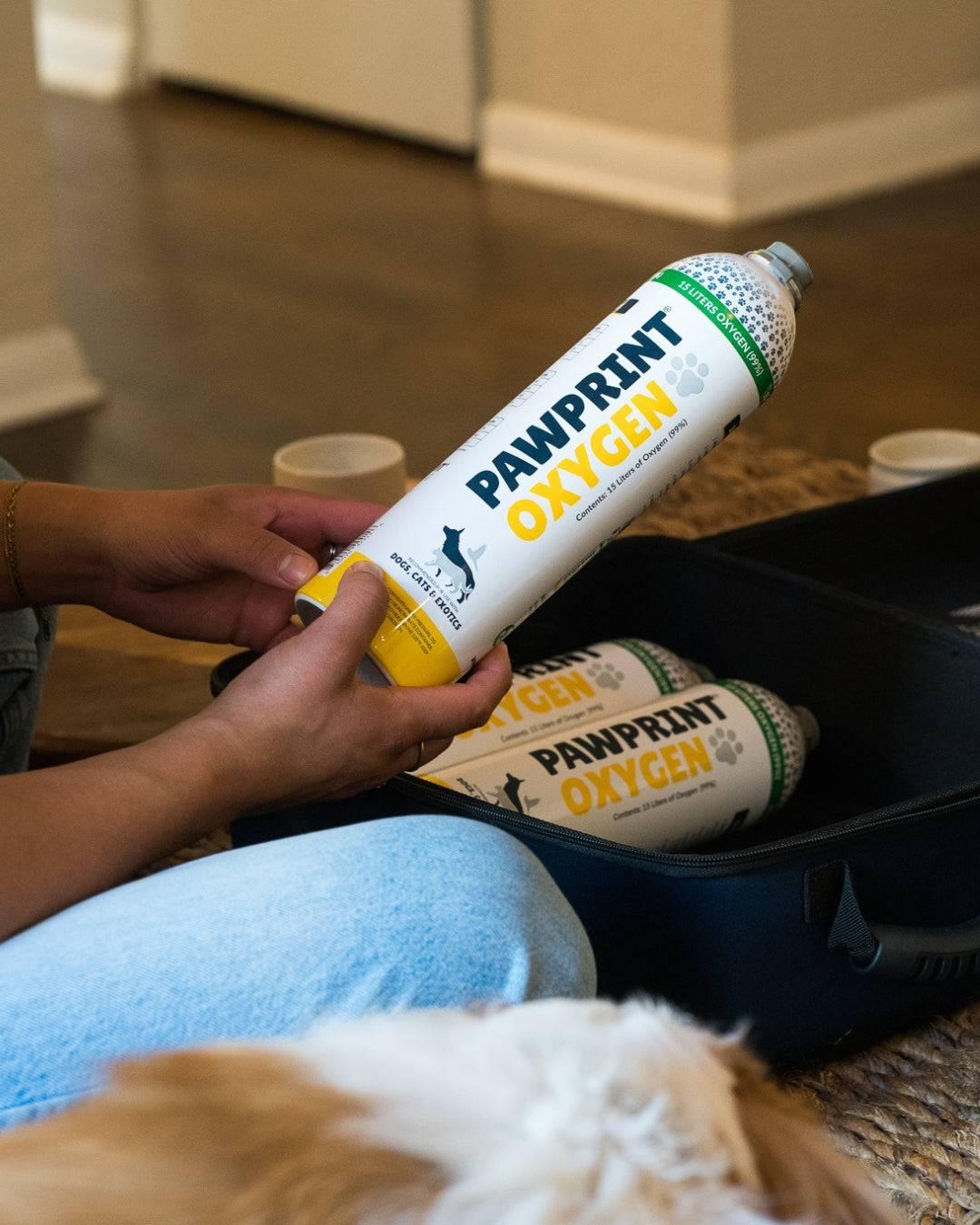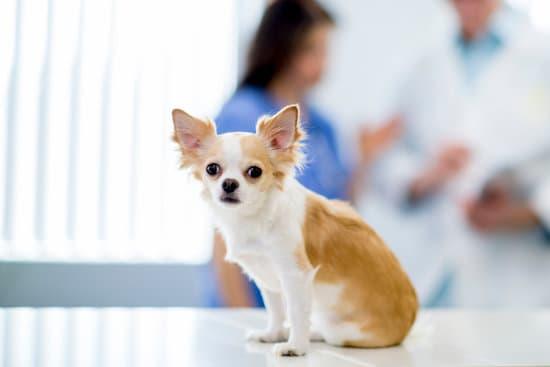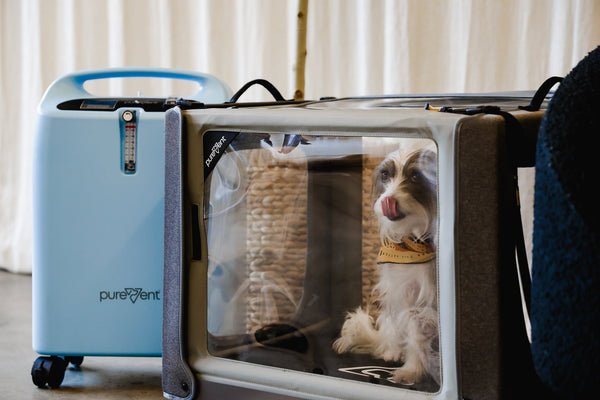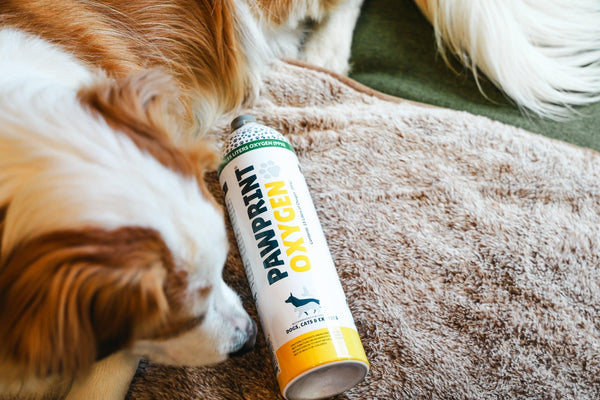4 Things To Consider Before You Buy A Pet Oxygen Chamber
Pet oxygen chambers can be used to administer extended oxygen therapy to your pet at home in order to treat a variety of conditions including pneumonia, congestive heart failure, cancer, collapsing trachea, feline asthma, and more. It's important to consider four things when selecting an oxygen chamber for your pet:
Table of Contents
1. Are You Selecting the Correct Size Oxygen Chamber?
Be sure to choose an oxygen chamber size that fits your pet and your oxygen source (especially the liters per minute required for the size). Bigger oxygen chambers require higher oxygen flow rates to work correctly, so make sure your oxygen source matches the size of your chamber, or you might end up doing more harm than good for your pet.
2. Do You Have an Oxygen Source For Your Oxygen Chamber?
A medical-grade oxygen concentrator is required to supply a pet oxygen chamber and create a safe environment for your pet. Make sure the chamber you are buying has a connection port and is sized correctly for the oxygen source that you have purchased.
Most available oxygen chambers and concentrators on Amazon are not considered medical grade and can't create medical-grade oxygen at the high flow rates needed to fill the chamber safely. Many of them may be able to make 90% oxygen gas at 1 Liter per minute, but you will need a flow rate of at least 5 liters per minute to fill a chamber to a safe level to combat the carbon dioxide, and since our equipment is all medical-grade, you can rest assured it will not only provide oxygen therapy but will do it safely.
3. Does Your Chamber Allow You to Customize the Oxygen Saturation Level?
Make sure your chamber allows you to set the oxygen saturation. If the oxygen saturation is too high or too low can be dangerous for your pet. Your veterinarian will prescribe the correct oxygen saturation level for your pet's condition. Customization is key to adjusting your pet's oxygen levels during recovery, and this will allow your pet to ween off levels later in recovery, if recommended by a veterinarian.
The PureVent Pet Oxygen Chamber offers unrivaled durability with its scratch-resistant side paneling. Its built-in vents effectively manage heat and humidity, while dual-access entry points and reinforced handles make for easy transport and pet access. Plus, its collapsible and packable design, complete with carrying case, allows for convenient storage and travel.

4. Does the Oxygen Chamber Prevent Harmful Carbon Dioxide Build-up?
Your pet expels carbon dioxide with every breath. Make sure your oxygen chamber has a way to prevent dangerous carbon dioxide buildup. Simply venting the chamber may not be enough.
How to Select the Correct Oxygen Chamber for Your Pet
Your pet's weight is a helpful guideline for selecting the size of the pet oxygen chamber, but it's important to measure your pet's height and length to ensure that you are purchasing the correct size. Compare your pet's measurements to the dimensions of the chamber and make sure your pet has a few inches on each side to move around. An oxygen chamber is like any other kennel you buy for your pet. You want to make sure they have enough room to be comfortable.
The PureVent Oxygen Chamber comes in two different sizes:
- Standard: 25” x 20” x 18” For pets up to 30lbs
- Large: 44’ x 26’ x 26” For pets up to 70lbs
How Do I Supply Oxygen to My Pet Oxygen Chamber?
In all cases, we recommend using a medical-grade oxygen concentrator to supply your pet oxygen chamber. Oxygen tanks or cylinders will run out of oxygen very quickly at the required flow rates, making them a less cost-effective option. Oxygen concentrators are extremely safe to use at home in comparison to heavy tanks or cylinders that are under high pressure.
When selecting an oxygen concentrator, make sure that your unit is medical-grade and has a continuous flow. This ensures that your oxygen concentrator can supply the required flow rate of oxygen at the correct purity in order to provide a safe environment for your pet.
Our tests show that you need a constant flow rate of 5 Liters per minute of medical-grade oxygen to supply the standard size PureVent Oxygen Chamber. The large size requires 10 Liters per minute of medical-grade oxygen. Using lower flow rates or a lower purity of oxygen can be dangerous for your pet.
How to Select the Correct Oxygen Level for Your Pet Oxygen Chamber
Room air contains 21% oxygen. The goal of oxygen therapy is to increase the level of oxygen in the bloodstream by providing an enriched supply of oxygen to the patient.
Different patients may require different oxygen levels (also called oxygen saturation) based on their medical history and condition. You should consult your veterinarian to determine the best oxygen level for your pet. Below, we'll go over some general guidelines that may apply to your pet.
In animal hospitals, the most common oxygen level used is 40%. This is considered a safe level because it is below the level at which oxygen toxicity (too much oxygen) can occur. Your pet oxygen chamber should include a way to set the level of oxygen in the chamber without adjusting the flow rate of the oxygen supply.
The Venturi Difference
The Venturi System mixes room air with the oxygen supply in order to achieve the set oxygen level. It's important to note, if you are considering purchasing a Pawprint Pet Oxygen Chamber, a Venturi Kit is included with your purchase - something that you will not find with most products on Amazon.
It's important to keep your oxygen supply at the flow rate that is recommended for your chamber size. In other words, you don't want to adjust the oxygen level or saturation in the chamber by increasing or decreasing the flow rate on your oxygen concentrator. Instead, use the Venturi System to set the oxygen level while maintaining the appropriate overall airflow to disperse heat, humidity, and carbon dioxide in the chamber.
Be careful of oxygen toxicity. Too much oxygen can be dangerous! Oxygen toxicity, also known as hyperoxia, can result if a pet is exposed to 100% oxygen for more than 24 hours, or >60% oxygen for more than 48 hours. Risks include lung damage and symptoms are similar to respiratory distress.
Inflammatory injury is caused by toxic metabolites of oxygen, including oxygen free radicals and superoxide molecules. Clinically, oxygen toxicity is difficult to diagnose, but changes in the lungs are similar to those seen in acute respiratory distress syndrome. The oxygen concentration used to maintain critical patients should always be minimized to the lowest the patient can tolerate.
How to Prevent Carbon Dioxide Build-up In Your Pet's Oxygen Chamber
One of the most important elements of your oxygen chamber setup is the displacement of carbon dioxide.
The best way to mitigate carbon dioxide in a pet oxygen chamber at home is through ventilation and air exchange. Venting your chamber is the first step: don't worry, you won't lose as much oxygen as you think! Our tests with the PureVent Pet Oxygen Chamber shows that the built-in Hypalon vents reduce carbon dioxide significantly while reducing oxygen by only 1-2%.
Proper air exchange is equally important to maintaining safe levels of carbon dioxide. A standard-sized oxygen chamber is typically 100-120 liters in liquid volume -- that's a lot of space to fill up with oxygen! Using a flow rate of 5 Liters per minute would take 24 minutes to cycle through all of the air in the chamber, which isn't enough air exchange to maintain safe carbon dioxide levels. So how do we fix that?
With the Venturi System! This system, described above and included with the PureVent Pet Oxygen Chamber, multiplies the total airflow in the pet oxygen chamber, helping to flush out carbon dioxide and keep the chamber cool. For example, using the 40% Venturi with a 5 Liter Per Minute oxygen supply results in 12-13 Liters Per Minute of total airflow in the pet oxygen chamber. That's enough to maintain safe carbon dioxide levels.
Be careful of pet oxygen chambers that don't use the Venturi System. We tested a few products marketed on Amazon and found that carbon dioxide levels rose to dangerous levels within 5 minutes of use.
Make sure you have the correct oxygen source for your oxygen chamber.
Purchase a pet oxygen chamber that gives your pet enough room to be comfortable.
Select an oxygen chamber that gives your pet proper ventilation from harmful carbon dioxide levels, heat, and humidity.
Select an oxygen chamber that allows you to customize the oxygen saturation level of the chamber.








